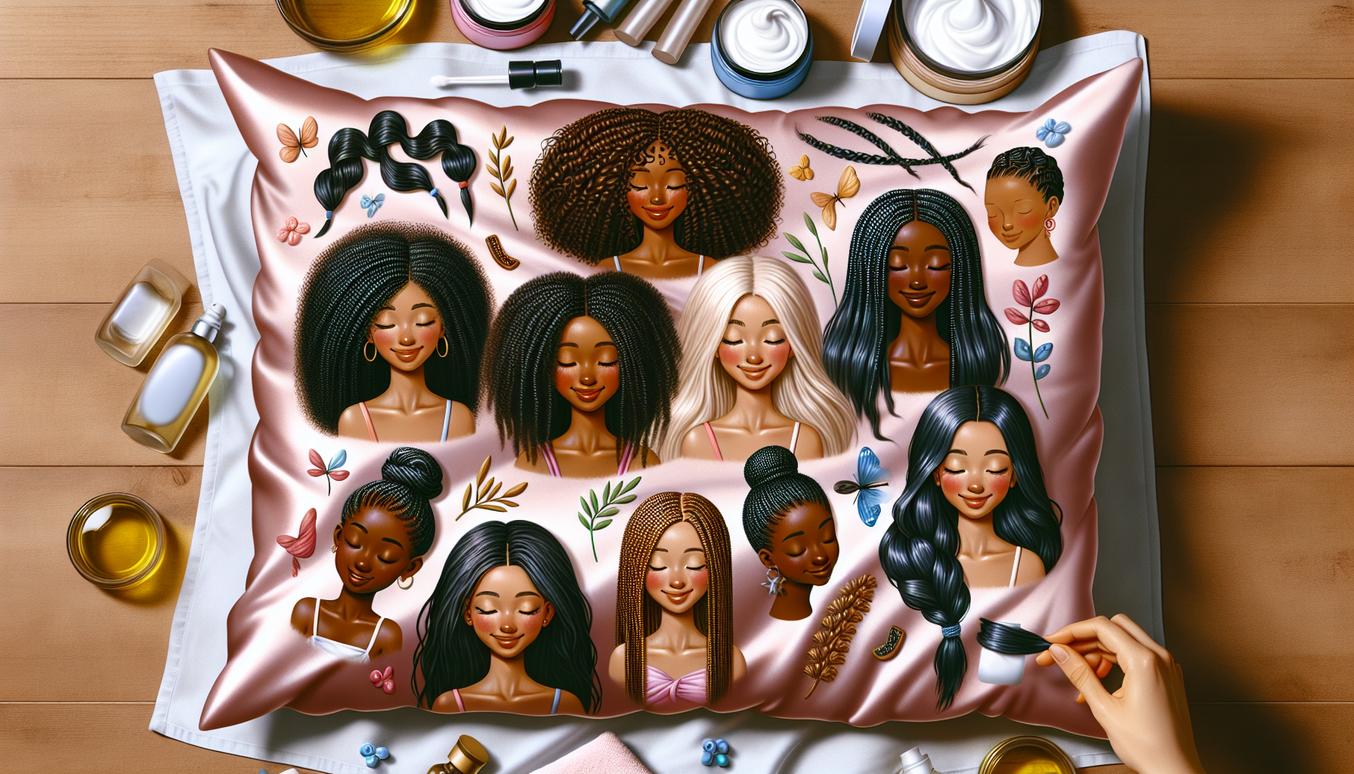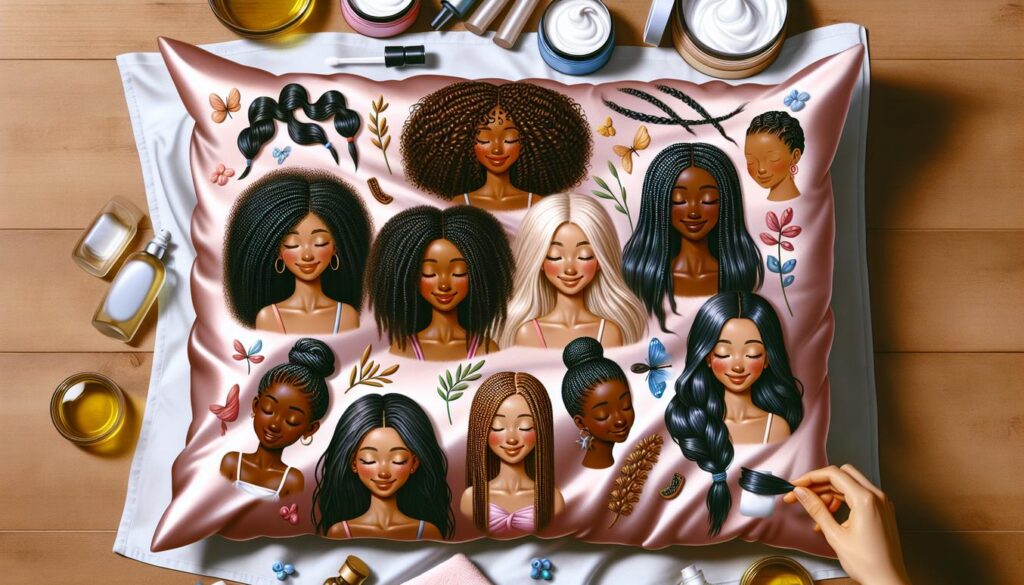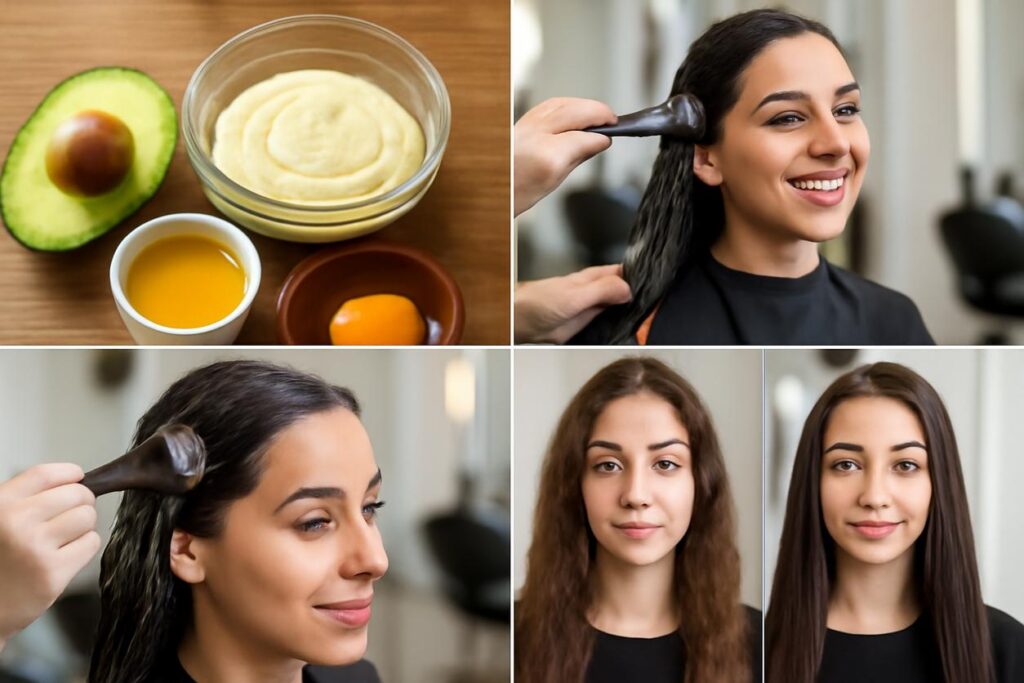Table of Contents
- Introduction to mindful curl care
- How to identify your curl family at home
- Hygiene that protects natural curl structure
- Moisture-first conditioning methods
- Styling without stiffness or crunch
- Nighttime preservation rituals for curl shape
- Nutrition for stronger, more elastic curls
- Easy DIY masks from kitchen staples
- Ingredient watchlist and label reading tips
- Routine templates for 3 curl profiles
- Troubleshooting: common curl setbacks and fixes
- FAQs and myth busting
- Further reading and evidence sources
Introduction to mindful curl care
Welcome to the ultimate guide to embracing your natural texture. If you have waves, curls, or coils, you know that your hair has a personality of its own. Caring for it can sometimes feel like a complex puzzle, but it doesn’t have to be. This guide is packed with practical, evidence-based curly hair tips designed to help you understand your unique needs and build a routine that delivers health, definition, and confidence in 2025 and beyond. Forget fighting your hair; it’s time to learn its language. Mindful curl care is about listening to what your hair needs—more moisture, less manipulation, better nutrients—and responding with gentle, effective techniques. Let’s unlock the full potential of your beautiful curls together.
How to identify your curl family at home
Before you can apply the right curly hair tips, you need to understand your hair’s fundamental properties. While curl pattern charts (from 2a waves to 4c coils) are a helpful starting point, your hair’s porosity, density, and thickness are far more important for choosing the right products and techniques. These characteristics determine how your hair absorbs moisture and reacts to products.
Quick curl tests and what they reveal
- The Porosity Test: Porosity is your hair’s ability to absorb and retain moisture. To test it, take a clean, dry strand of hair and spray it with a fine mist of water.
- Low Porosity: Water beads up on the hair strand. Your hair has a tightly bound cuticle layer, making it resistant to moisture. It’s prone to product buildup because products tend to sit on top rather than absorb.
- Medium Porosity: Water sits on the strand for a moment before absorbing. This is often considered the ideal porosity, as the cuticle layer is looser, allowing moisture in and retaining it well.
- High Porosity: Water absorbs almost instantly. Your hair has gaps in the cuticle layer, so it drinks up moisture quickly but can also lose it just as fast. It’s often prone to frizz and dryness.
- The Density Test: This refers to how many individual hair strands you have on your head. Look at your dry, loose hair in a mirror.
- Low Density: You can easily see your scalp without parting your hair.
- Medium Density: You can see your scalp with some effort and parting.
- High Density: It’s difficult to see your scalp at all.
- The Thickness Test: This measures the width of a single strand. Pluck a strand and compare it to a piece of sewing thread.
- Fine: The strand is thinner than the thread. Fine hair is delicate and can be easily weighed down by heavy products.
- Medium: The strand is about the same width as the thread.
- Coarse: The strand is thicker than the thread. Coarse hair has a wider structure and can often handle richer, heavier products.
Hygiene that protects natural curl structure
How you wash your hair is the foundation of any good curl care routine. The goal is to cleanse your scalp without stripping your hair of its natural oils, which are essential for keeping curls hydrated and healthy. Traditional shampoos with harsh sulfates can be incredibly drying for curly hair, leading to frizz and breakage.
Choosing a cleansing rhythm that suits your curls
There is no one-size-fits-all answer for how often to wash. It depends on your hair’s properties and your lifestyle. Here are the main approaches:
- Co-Washing: This means washing your hair only with a cleansing conditioner. It’s a great option for those with very dry, coarse, or coily hair (high porosity) who need maximum moisture. Aim for 1-3 times a week.
- Low-Poo Cleansing: This involves using a gentle, sulfate-free shampoo. It provides a light cleanse without stripping the hair. This is ideal for most curl types, from wavy to curly, and can be done 2-4 times a week depending on oiliness and product use.
- Clarifying: Everyone with curls needs to clarify periodically. A clarifying shampoo removes stubborn product buildup, minerals from hard water, and oils that gentle cleansers can’t. Use it once or twice a month to reset your hair. You’ll know it’s time when your curls feel limp, greasy, or unresponsive to your usual products.
Moisture-first conditioning methods
Moisture is the single most important element for healthy curls. A well-hydrated curl is a happy curl—it’s defined, elastic, and shiny. Your conditioning step is where the magic of hydration truly happens. Always apply conditioner to wet hair to help the product distribute evenly and lock in water.
Leave-in and rinse-out approaches for different curls
The key is to give your hair what it needs without weighing it down. A great technique for all curl types is “squish to condish.” While rinsing, cup water in your hands and scrunch it upwards towards your scalp. This helps the hair cuticle absorb more water and conditioner, encouraging curl clumps to form.
- For Fine or Wavy Hair (Low Density/Low Porosity): You may find that a good rinse-out conditioner is enough. If you use a leave-in, choose a very lightweight spray or lotion and apply it sparingly, focusing on the ends.
- For Medium to Thick Curly Hair (Medium Porosity): A rinse-out conditioner followed by a creamy leave-in conditioner is a fantastic combination. This provides a solid base layer of moisture for your styling products to build upon.
- For Coily or Very Dry Hair (High Porosity): Maximum moisture is the goal. After your rinse-out conditioner, apply a rich, buttery leave-in conditioner or cream to soaking wet hair to trap as much hydration as possible.
Styling without stiffness or crunch
Modern curly hair tips are all about achieving soft, touchable definition. The “crunchy” feel, often called a “cast,” is formed by styling products like gels or mousses. This cast is not the enemy! It protects your curls as they dry, minimizing frizz. The secret is to gently “scrunch out the crunch” only after your hair is 100% dry.
Application order and minimal-manipulation techniques
The order in which you apply products matters. A popular method is the LOC (Leave-in, Oil, Cream) or LCO (Leave-in, Cream, Oil) method. The goal is to layer products to seal in moisture effectively. For best results, always apply styling products to soaking wet hair—this helps distribute them evenly and prevents frizz.
- Step 1: Base (Leave-in or Cream): After conditioning, while your hair is still dripping wet, apply your leave-in conditioner or curl cream. Use the “praying hands” method (smoothing the product down the hair shaft between your palms) to evenly coat your curls.
- Step 2: Definition (Gel or Mousse): Apply a gel or mousse using the same praying hands method, then gently scrunch upwards to encourage your curl pattern. The more you scrunch, the tighter your curls may be.
- Step 3: Dry Without Touching: This is a crucial step! Let your hair air-dry or use a diffuser on low speed and low heat. Do not touch your hair while it is drying. Manipulating it will disrupt your curl pattern and create frizz. Once it’s completely dry, you can gently scrunch your hair to break the gel cast, revealing soft, defined curls.
Nighttime preservation rituals for curl shape
One of the biggest challenges for people with curls is making their style last more than one day. Protecting your hair while you sleep is non-negotiable. Tossing and turning on a standard cotton pillowcase creates friction that roughs up the hair cuticle, leading to frizz, tangles, and loss of definition.
Pillowcase choices and loose styles
- Switch to Silk or Satin: A silk or satin pillowcase is a game-changer. Your hair will glide over the smooth surface, dramatically reducing friction and preserving your style. A satin bonnet or cap provides the same benefit.
- The “Pineapple”: This is a popular and effective technique. Gather your hair into a very high, loose ponytail on top of your head, secured with a gentle tie like a scrunchie. This protects the length of your hair and prevents you from sleeping on your curls.
- Bonnets and Buffs: For shorter hair or tighter coils, a satin-lined bonnet or a versatile buff (a seamless fabric tube) can be used to contain and protect your curls overnight.
Nutrition for stronger, more elastic curls
Healthy hair starts from within. While products can enhance your hair’s appearance, your diet provides the building blocks for strong, resilient hair growth. A balanced diet rich in specific vitamins and minerals can improve hair elasticity, strength, and shine.
Key nutrients and simple meal ideas
Focus on incorporating these key nutrients into your meals:
- Protein (Keratin): Hair is primarily made of protein. Ensure you get enough from sources like eggs, lentils, fish, and lean meats.
- Iron: Iron deficiency can be linked to hair loss. Find it in spinach, red meat, and fortified cereals.
- Vitamin C: This helps your body absorb iron and is crucial for producing collagen, which strengthens hair. It’s abundant in citrus fruits, bell peppers, and strawberries.
- Omega-3 Fatty Acids: These nourish the scalp and hair follicles. Sources include salmon, walnuts, and flaxseeds.
- Zinc: Zinc is vital for hair tissue growth and repair. It’s found in pumpkin seeds, lentils, and beef.
- Biotin: A well-known B-vitamin for hair health. Find it in eggs, nuts, and sweet potatoes.
Simple Idea: A breakfast of scrambled eggs with a side of avocado and a handful of berries provides protein, healthy fats, and vitamins. A lunch of lentil soup with a spinach salad covers iron, protein, and zinc.
Easy DIY masks from kitchen staples
You don’t need expensive treatments to give your hair a boost. Your kitchen likely holds everything you need for a nourishing hair mask. These treatments can provide a concentrated dose of moisture or protein to address specific concerns.
- Moisture Mask (for dry, frizzy hair): Mash half a ripe avocado with one tablespoon of olive oil. Apply to clean, damp hair, leave on for 20-30 minutes, and rinse thoroughly.
- Protein and Shine Mask (for limp, dull hair): Whisk one egg with two tablespoons of plain yogurt. Apply to damp hair, wait 15-20 minutes, and rinse with cool water to avoid scrambling the egg.
When to use a mask and when to skip
Understanding the balance between moisture and protein is a key part of our curly hair tips.If your hair feels brittle and straw-like, it likely needs moisture. Use a moisture mask weekly.If your hair feels overly soft, limp, and won’t hold a curl, it may have too much moisture and need protein. Use a protein mask no more than once a month, as too much protein can make hair stiff and brittle.
Ingredient watchlist and label reading tips
Becoming a savvy label-reader is empowering. Knowing which ingredients to avoid and which to seek out can transform your hair’s health.
| Ingredients to Limit or Avoid | Good-for-Curls Ingredients |
|---|---|
| Harsh Sulfates (e.g., Sodium Lauryl Sulfate): Powerful detergents that strip natural oils. | Humectants (e.g., Glycerin, Aloe Vera): Attract moisture from the air into your hair. |
| Drying Alcohols (e.g., Alcohol Denat, Isopropyl Alcohol): Evaporate quickly and can dehydrate hair. | Emollients (e.g., Shea Butter, Avocado Oil): Smooth the hair cuticle and lock in moisture. |
| Non-Water-Soluble Silicones (e.g., Dimethicone): Cause buildup that prevents moisture from entering the hair shaft. | Fatty Alcohols (e.g., Cetyl Alcohol): Non-drying, they help soften and detangle hair. |
Routine templates for 3 curl profiles
Here are some starting points. Adjust based on your hair’s unique properties (porosity, density).
| Hair Profile | Cleanse | Condition | Style |
|---|---|---|---|
| Wavy (Fine, Low Porosity) | Low-poo shampoo 2-3 times/week. Clarify monthly. | Lightweight rinse-out conditioner. Minimal to no leave-in. | Apply a lightweight mousse or foam to wet hair and scrunch. Diffuse or air-dry. |
| Curly (Medium Density and Porosity) | Low-poo or co-wash 1-2 times/week. Clarify monthly. | Hydrating rinse-out conditioner. Apply a creamy leave-in. | Layer a curl cream and a medium-hold gel on soaking wet hair. Diffuse or air-dry. |
| Coily (Thick, High Porosity) | Co-wash 1-2 times/week. Clarify every 4-6 weeks. | Rich, moisturizing rinse-out conditioner. Apply a thick leave-in cream. | Use the LOC/LCO method. Apply a buttery cream and seal with a strong-hold gel or oil. |
Troubleshooting: common curl setbacks and fixes
- Problem: Persistent Frizz.Cause: Usually a lack of moisture, rough towel drying, or touching hair while it dries.Fix: Ensure you are using enough conditioner and applying styling products to soaking wet hair. Use a microfiber towel or cotton T-shirt to scrunch out excess water. Keep your hands off until it’s 100% dry.
- Problem: Limp, Weighed-Down Curls.Cause: Product buildup or over-moisturizing. Your products might be too heavy.Fix: Use a clarifying shampoo to reset your hair. Switch to lighter products like lotions and foams instead of heavy butters and creams.
- Problem: Curls Look Great on Wash Day But Awful the Next.Cause: Lack of overnight protection.Fix: Implement a nighttime routine with a satin pillowcase and the “pineapple” method or a bonnet. In the morning, lightly mist your hair with water to reactivate the product and gently scrunch.
FAQs and myth busting
Myth: You should never brush curly hair.
Fact: You should never brush curly hair when it’s *dry*. This disrupts the curl pattern and causes frizz and breakage. However, using a wide-tooth comb or a detangling brush on hair that is saturated with conditioner in the shower is the best way to safely remove tangles.
Myth: Oils moisturize your hair.
Fact: Oil and water don’t mix. Water is the ultimate moisturizer. Oils are excellent at *sealing* in the moisture that is already in your hair shaft, preventing it from escaping. Always apply oils to damp or wet hair after a leave-in conditioner, not to dry hair.
FAQ: How do I fight humidity?
Answer: Humidity causes hair to swell and frizz. Use products with anti-humectant ingredients, like a good gel that forms a strong cast. Sealing your hair with a small amount of oil can also help block atmospheric moisture from entering the hair shaft.
Further reading and evidence sources
Empowering yourself with knowledge is the best thing you can do for your curls. For those interested in the science and health behind hair care, these resources provide credible, expert-backed information.
- Curly hair research: The National Center for Biotechnology Information offers in-depth studies on hair biology and structure.
- Dermatology resources: The American Academy of Dermatology provides expert advice on hair and scalp health.
- Hair care guidance: The National Health Service offers practical guidance on general hair care and conditions.
- Nutrition and hair health: The World Health Organization provides guidelines on nutrition essential for overall health, which directly impacts hair.






